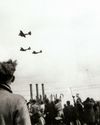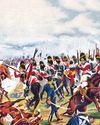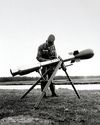
Following the initial landings, the Greeks sought to strengthen their position by pushing into surrounding territory. The Hellenic Army of Occupation in Izmir was renamed the Occupation Field Army of Asia Minor in December 1919. The Greeks were supported by the British, who supplied naval, land and air power, and by the Kuvâ-i Inzibâtiyye (Forces of Order), an Ottoman force established to counter the Türk Ulusal Hareketi (Turkish National Movement).
Reinforcements were dispatched to Smyrna, and by May 1920 the Greek force totalled 3,248 officers and 91,063 men. Initial moves were made the same month: the Kuvâ-i Inzibâtiyye attempted to seize Geyve and Izmit but were repelled. Nevertheless, they dug in outside Izmit while British troops acted in support. The following month, Turkish forces attempted to drive back the Kuvâ-i Inzibâtiyye but, in the face of British naval and airpower, failed to do so.
The British and Greeks then planned a new offensive, the latter needing little encouragement to advance into the southern coastal area of the Sea of Marmara and the Aegean Region. The Greeks viewed this region as their historical lands.
هذه القصة مأخوذة من طبعة Issue 109 من History of War.
ابدأ النسخة التجريبية المجانية من Magzter GOLD لمدة 7 أيام للوصول إلى آلاف القصص المتميزة المنسقة وأكثر من 9,000 مجلة وصحيفة.
بالفعل مشترك ? تسجيل الدخول
هذه القصة مأخوذة من طبعة Issue 109 من History of War.
ابدأ النسخة التجريبية المجانية من Magzter GOLD لمدة 7 أيام للوصول إلى آلاف القصص المتميزة المنسقة وأكثر من 9,000 مجلة وصحيفة.
بالفعل مشترك? تسجيل الدخول

NAUMACHIA TRUTH BEHIND ROME'S GLADIATOR SEA BATTLES
In their quest for evermore novel and bloody entertainment, the Romans staged enormous naval fights on artificial lakes

OPERATION MANNA
In late April 1945, millions of Dutch civilians were starving as Nazi retribution for the failed Operation Market Garden cut off supplies. eet as In response, Allied bombers launched a risky mission to air-drop food

GASSING HITLER
Just a month before the end of WWI, the future Fuhrer was blinded by a British shell and invalided away from the frontline. Over a century later, has the artillery brigade that launched the fateful attack finally been identified?

SALAMANCA
After years of largely defensive campaigning, Lieutenant General Arthur Wellesley went on the offensive against a French invasion of Andalusia

HUMBERT 'ROCKY'VERSACE
Early in the Vietnam War, a dedicated US Special Forces officer defied his merciless Viet Cong captors and inspired his fellow POWs to survive

LEYTE 1944 SINKING THE RISING SUN
One of the more difficult island campaigns in WWII's Pacific Theatre saw a brutal months-long fight that exhausted Japan’s military strength

MAD DAWN
How technology transformed strategic thinking and military doctrine from the Cold War to the current day

BRUSHES WITH ARMAGEDDON
Humanity came close to self-annihilation with the Cuban Missile Crisis, Broken Arrows’ and other nuclear near misses

THE DEADLY RACE
How the road to peace led to an arms contest between the USA and USSR, with prototypes, proliferation and the world’s biggest bomb

THE MANHATTAN PROJECT
Einstein, Oppenheimer and the race to beat Hitler to the bomb. How a science project in the desert helped win a war